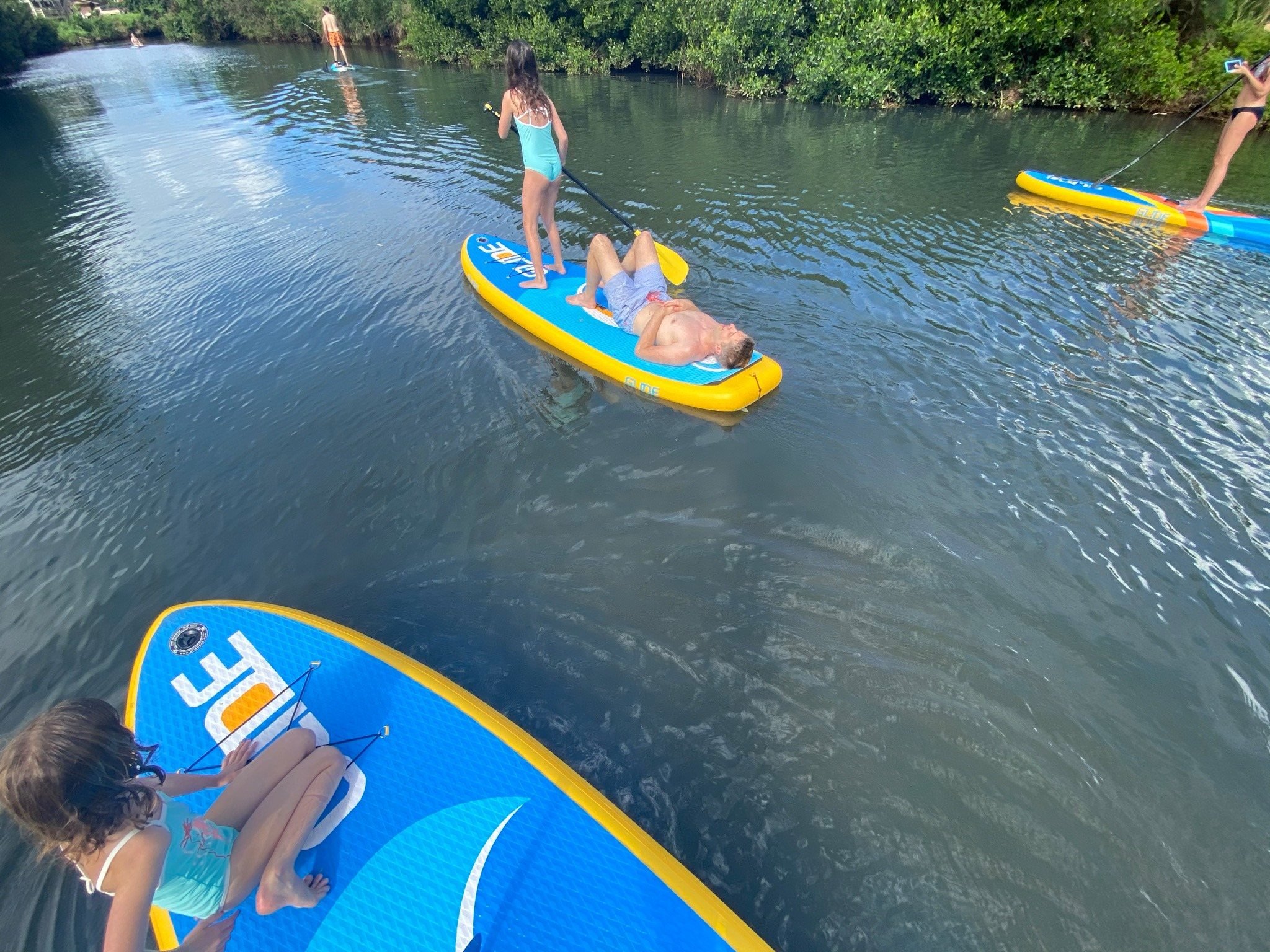
Unlocking the Science of Balance: Stand Up Paddle Boarding as a Dynamic Equilibrium Laboratory
It's all about the balance when it comes to stand up paddle boarding.
An Introduction to Stand Up Paddle Boarding
Stand up paddle boarding (SUP) is a water sport that, in recent years, has gained significant traction worldwide. But what makes it unique is its deep connection to the principles of balance and stability. The dynamic equilibrium achieved by a paddle boarder is a fascinating showcase of scientific principles such as buoyancy, center of gravity, and fluid dynamics.
The sport is versatile and accommodates a wide range of skill levels, from those who find joy in leisurely cruising on placid lakes to adrenaline-seekers surfing waves or embarking on long-distance expeditions.
The Physics of Paddle Boards

When it comes to the physics behind a paddle board, we need to consider two main concepts: buoyancy and center of gravity.
Buoyancy
Buoyancy is the force that enables the board and the rider to float. According to Archimedes' principle, a body immersed in a fluid experiences an upward force equal to the weight of the fluid displaced.
So, whether you choose a solid board or an inflatable paddle board, it's designed to displace a volume of water that weighs more than the board and the rider combined. This is a critical factor in determining the board's weight capacity.
Interestingly, the inflatable paddle boards have an advantage when it comes to buoyancy. As stated in this guide, the double-layer construction often used in inflatable boards gives them excellent buoyancy and durability.
Center of Gravity
The rider's center of gravity also plays a crucial role in the SUP's stability. In simpler terms, the center of gravity is the point at which the weight of an object is evenly dispersed and all sides are in balance.
On a paddle board, maintaining a low center of gravity by standing in the middle of the board and keeping your knees slightly bent helps in maintaining balance. The non-slip deck of the paddle board and the traction pad also aid in achieving this stability.
The Role of SUP Accessories

Various SUP accessories such as adjustable paddles, fins, and even the kayak seat contribute to balance and stability.
Three removable fins at the bottom of the paddle board provide resistance against lateral movement and offer directional stability. They make a significant difference when it comes to maneuvering the board and maintaining course in the water.
The paddle acts as a counterbalance while standing and is pivotal in propulsion and navigation. An adjustable paddle lets you customize its length for optimum balance and energy conservation, as mentioned in this guide.
The Balance of Mind and Body in Paddle Boarding
SUP doesn't just provide an excellent physical workout; it's also a mental exercise. Balance is not solely a physical endeavor; it's a harmony of body and mind. In SUP and Mindfulness, it is evident that paddle boarding is a platform that can help cultivate a sense of peace and present moment awareness.
Looking Ahead: The Evolution of Stand Up Paddle Boarding
Stand up paddle boarding, with its allure of versatility and broad accessibility, continues to evolve and expand. Innovative designs and technologies are consistently redefining the experience, making it more accessible, enjoyable, and thrilling.
The paddle boarding industry is a hotbed of creativity and advancements, continually pushing boundaries and exploring new dimensions. From boards equipped with hydrofoils that give riders the sensation of flying over water to boards that are integrated with technology for tracking and improving performance, the future holds many exciting developments.

Additionally, the expansion of SUP culture, embracing various activities such as SUP yoga, long-distance SUP expeditions, and paddle board fishing, continues to create an ever-evolving ecosystem of opportunities for enthusiasts. There is a growing emphasis on eco-friendly practices, encouraging paddle boarders to respect and protect the environments they explore.
As the sport becomes more mainstream, the inclusion and development of competitions, challenges, and events are also on the rise, further bolstering the sense of community among paddle boarders worldwide.
In summary, stand up paddle boarding's future is dynamic and promising. It continues to engage individuals of all skill levels and interests, remaining at the forefront of outdoor recreational activities and water sports. Its ongoing evolution is a testament to the adaptability and resilience of this beloved water sport.

